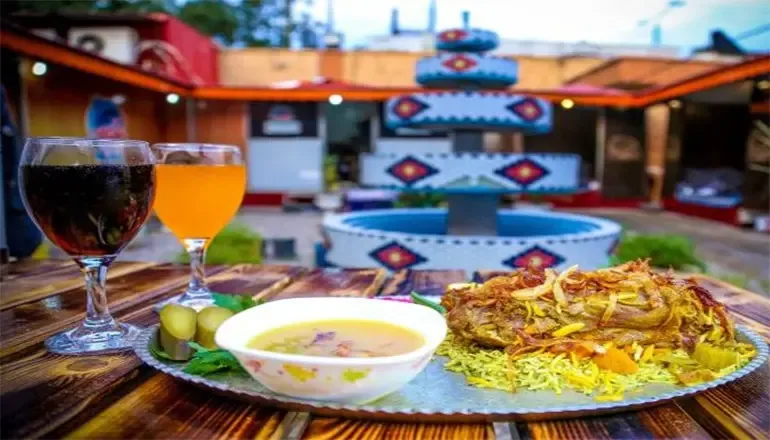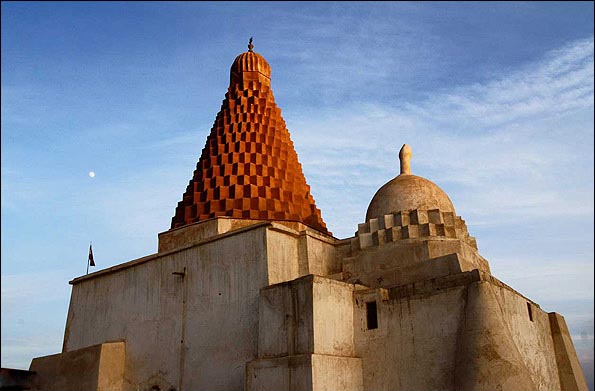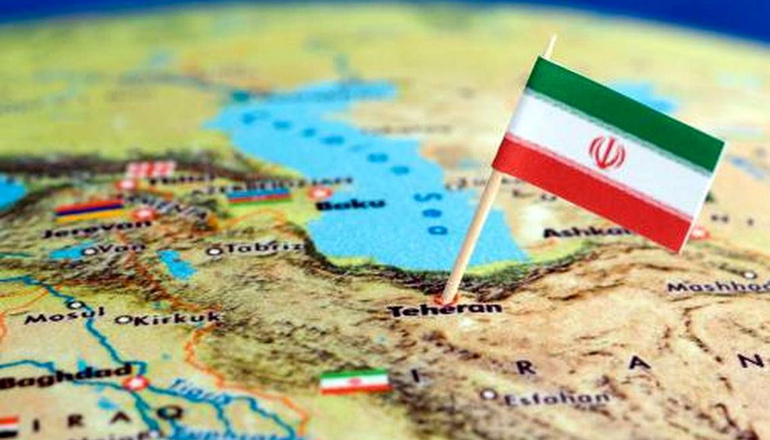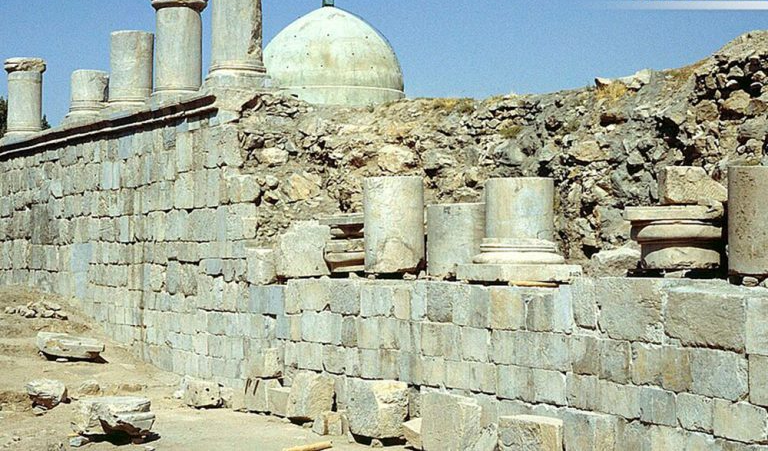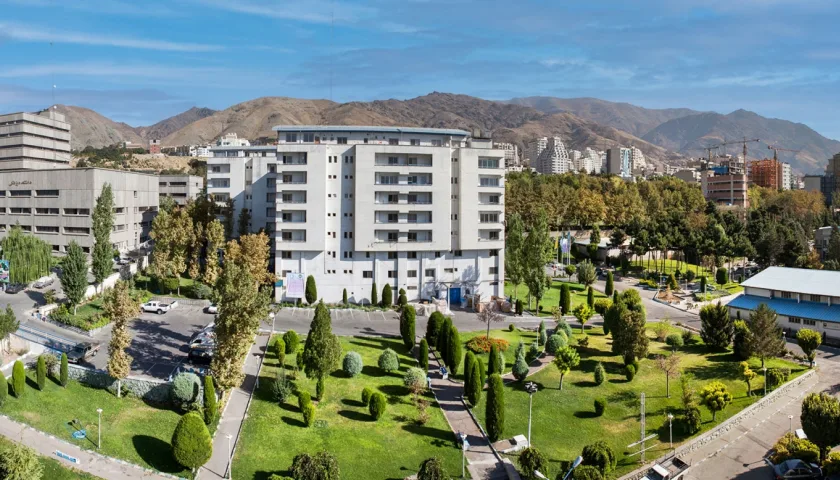Isfahan’s Souvenirs of Flavor: Gaz, and the Unexpected Delights
Isfahan Province is considered one of the most extensive provinces in Iran. The city of Isfahan, its capital, hosts some of Iran’s most famous tourist attractions. Many foreign tourists choose Iran with the excitement of visiting Isfahan’s remarkable sights, and if you ask any foreign traveler, they will surely mention Isfahan as one of their favorite cities.
Isfahan is the kind of city that everyone should experience at least once. A city that takes you deep into history with its winding bazaars and steals the heart of every traveler with its colorful souvenirs.
Buying souvenirs in Isfahan is one of the most captivating parts of a trip to this city. Through purchasing souvenirs, we involve our friends and family in the sweet memories of the journey. In Isfahan, you have a wide range of choices for buying souvenirs, from various sweets and delicious snacks to the finest handicrafts that are less commonly found elsewhere in Iran. Below, we introduce the best souvenirs from the city and province of Isfahan.
Gaz: A Sweet Delight with a Rich History
Gaz from Isfahan boasts a long and storied history that spans several centuries. Iranian kings, centuries ago, would present Gaz as a gift to other monarchs around the world. Its roots can be traced back to 450 years ago during the Safavid era, making it the most important souvenir of Isfahan. This delicious sweet is made from a substance called “Gaz Angabin.”
“Gaz Angabin” is derived from a plant known as “Beteh” or the Gaz tree. This mountainous tree, reaching a maximum height of two meters, is predominantly found in the climatically favorable regions of Bakhtiari and Khansar in the foothills.
To produce high-quality Gaz, they use Gaz plant seeds, sugar, and various nuts such as pistachios or almonds. Sometimes, by special order, they would add a substance called “Shir Khisht” to Gaz or even replace pure water with watermelon juice. This customized and exclusive type of Gaz was sent as a gift to kings and leaders of other nations, not available in the market. However, due to the scarcity and high cost of the primary ingredient, high-quality Gaz is less frequently produced.
The price of Gaz Angabin is exceptionally high, leading to the use of alternatives such as glucose, rosewater, sugar, egg whites, and various nuts like almonds, hazelnuts, walnut kernels, and pine nuts in its preparation. Instead of Angabin, Teranjbin, Shir Khisht, honey, or herbal Angabin are used.

Gaz is packaged and produced in various forms, including:
- 1. Liquorice Gaz (Gaz Leqmei): After the materials are prepared, Gaz is cut into uniform pieces with a special device.2. Powdery Gaz (Gaz Ardi): Gaz is rolled into small balls and then shaped into squares or circles using a pressing machine. It is placed in a bed of flour to cover the sticky surface of Gaz with flour, providing greater durability.
- 3. Coin-shaped Gaz (Gaz Sekkei): Similar to Powdery Gaz, it is shaped into small coins after being prepared and then packaged.
- 4. Sliced Gaz (Gaz Borsi): Before packaging, Gaz is sliced into recognizable shapes using specialized devices that reveal the inner nut.
- 5. Chocolate-coated Gaz: To make this type of Gaz, it is covered with a layer of chocolate to preserve its moisture and extend its shelf life. Due to the use of cocoa powder or powdered milk, it has a different taste compared to regular Gaz.
- 6. Finger-shaped Gaz (Gaz Angosht Pich): This very soft type of Gaz, without any nuts, is easily consumable with a spoon. It is usually suitable for the elderly who may have difficulty chewing firmer Gaz.
Poulet: A Popular Sweet Delight of Isfahan
Following Gaz, one of the most famous sweets and edible souvenirs of Isfahan is Poulet. This product is not only popular among tourists but is also highly cherished by the locals. Poulet belongs to the confectionery family and, due to its thin and transparent appearance resembling a bead, it is called Poulet. Poulet is prepared in various flavors, including saffron, pistachio, coconut, sesame, cocoa, lime, mint, honey, and ginger.
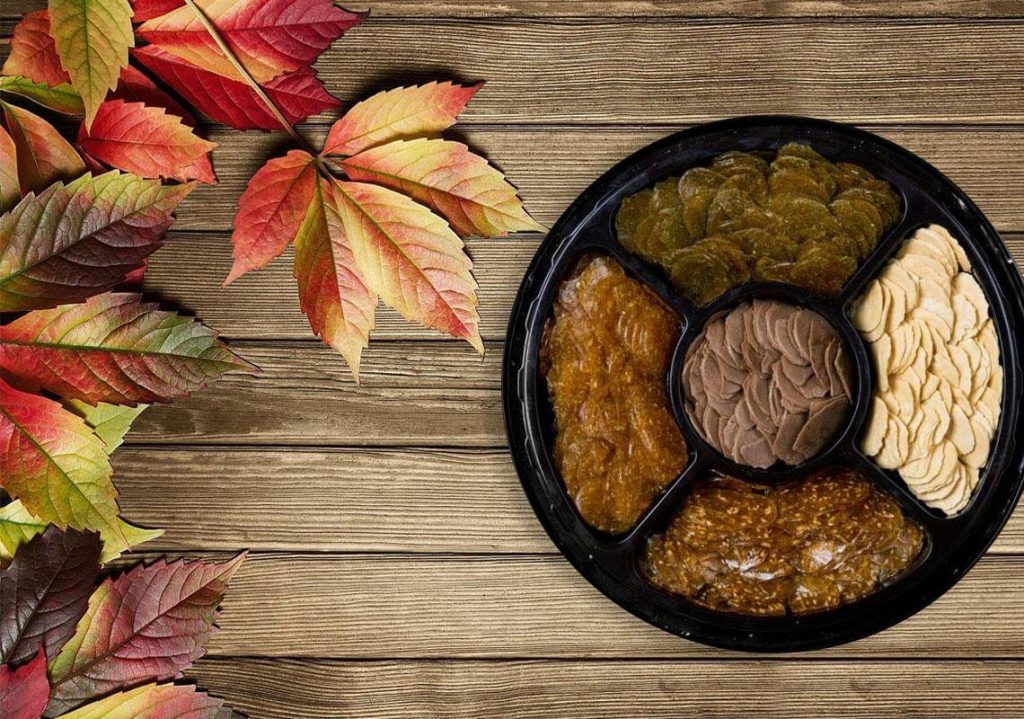
Nabat: Sweet Crystals with Diverse Flavors
Nabat is another Isfahan souvenir, although not exclusive to Isfahan. Nabat can be purchased in the form of crystalline branches or wooden sticks. To impart different scents and flavors to Nabat and create diversity, various ingredients are used. Different types of Nabat, such as cinnamon, mint, saffron, thyme, lime, and oregano, are available in Isfahan’s stores.
Fereydunshahr Honey
Perhaps you haven’t heard yet, but the honey produced in Fereydunshahr, Isfahan, is considered one of the finest in the country. The excellence of this honey is attributed to the diverse plant life and the presence of numerous medicinal herbs in the city. The aroma and taste of this honey vary depending on the plants the bees have fed on. The different types of honey in Fereydunshahr include Yellow Thistle Honey, Zoul Honey, and Ghonghal Honey.
Borshotoak: Traditional Iranian Confectionery
Borshotoak is one of the traditional Iranian sweets produced in various cities across the country. It is made using wheat flour along with cardamom and powdered sugar. Borshotoak is produced in wheat and chickpea varieties and is packaged after being cut into almond-shaped pieces.
Rice Sweet
Rice sweets are a popular confectionery produced in many cities in Iran. For example, Kermanshah is known for its rice sweets. In Isfahan, like Kermanshah, there are numerous workshops producing this sweet, and their products can be bought packaged from stores.
Fereni and Sherbet; A Nourishing and Exceptional Dessert
If you visit Isfahan’s traditional markets or are a guest in this city, you’ll likely be treated to fereni and sherbet for breakfast. Isfahanis often enjoy fereni cold, and in some shops, they even add ice chips on top of the fereni to chill it. This delightful dessert, paired with grape or date sherbets, creates an extraordinary flavor. So, on your next trip to Isfahan, be sure to take some fereni and sherbet as a unique souvenir from the city.
Kerki Sweet
Kerki sweet is the name of one of Isfahan’s famous confections. Its exquisite sweetness and unique flavor have gained it many fans, especially among the city’s tourists.
Joz-e Qandi
This local confection is one of the most expensive souvenirs in Iran. It is made using a local fruit called “Alag,” which is a type of apricot. The fruit’s skin is removed, and instead of the pit, ground walnut and sugar dust are added, then the mixture is dried. In other cities, besides this local apricot, they use other fruits like plums, figs, pears, etc., to make Joz-e Qandi.
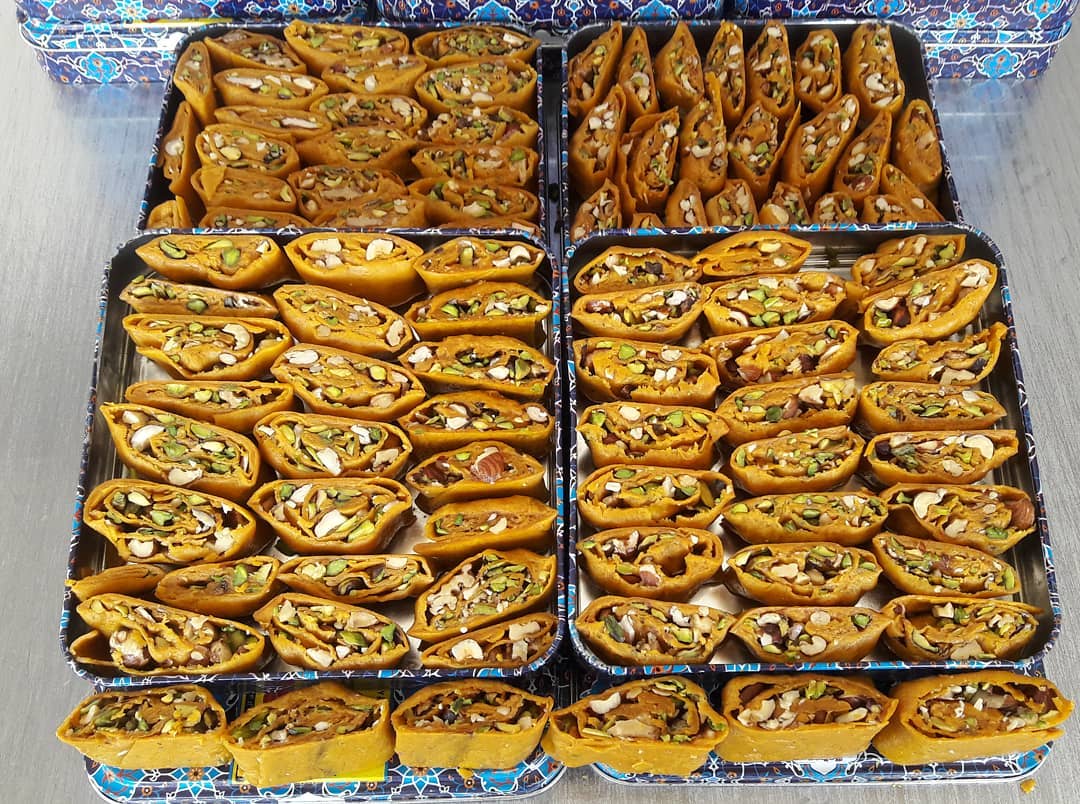
Sohan Asali
Honey, butter, sugar, almond and pistachio kernels, water, rosewater, and saffron-infused syrup are the primary ingredients for making this delicious and unique confection, available in various shapes in Isfahan’s market. Some are in sheet form, while others are sliced.
Minakari (Enameling)
Isfahan is the birthplace of the art of Minakari, which involves decorating metal objects, primarily made of gold, silver, brass, or copper, with colorful materials. The beauty of Minakari lies in its intricate patterns and vibrant colors. Tourists, both domestic and international, appreciate and purchase beautifully enameled items as souvenirs.
Khatem Kari
Khatem Kari is another captivating craft in Isfahan, executed by skilled artisans using wood in the craft industry. This art form, prevalent not only in Isfahan but also in Shiraz, traces its origins to the Safavid era. Khatem Kari involves arranging small triangular pieces of wood to create beautiful geometric patterns. Materials such as camel or horse bone, gold, silver, aluminum, and various types of wood like ebony, apricot, orange, etc., are used in Khatem Kari.
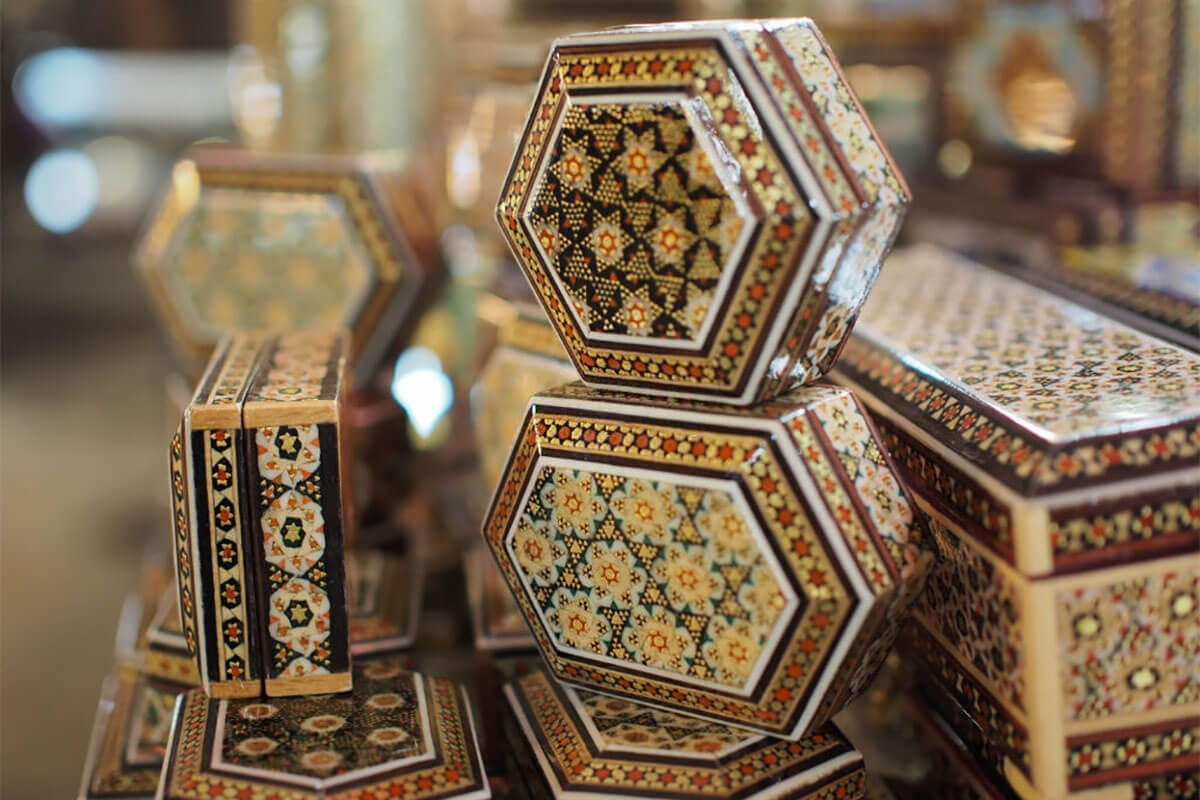
Parchment Textiles
Parchment textiles, also known as Qalamkari, are a form of fabric printing using pre-made wooden templates on different fabrics such as cotton, canvas, and in various colors. These beautifully patterned textiles make for an excellent souvenir from a trip to Isfahan.
Tile Work (Kashi)
The oldest existing tiles in Isfahan are turquoise-colored tiles used to adorn the historical minarets during the Seljuk period. In Isfahan, besides seven-color tiles and glazed tiles, various vessels, pots, and decorative items with different patterns are produced, often having export value. Blue and black inked tiles with historical inscriptions in Shahreza are particularly renowned.
Embroidery and Decorative Sewing
Embroidery, flower sewing, sequin sewing, and Melaile sewing are arts performed by Isfahani women. The raw materials for creating these beautiful artworks include handwoven fabrics in various colors and silk threads.
Melaile Work
Silverworking is also known as Melaile in Isfahan and is widely produced. Isfahani silversmiths create sets of necklaces, bracelets, and brooches, displaying various patterns, which are then sold.
Pen Engraving
This art, one of Isfahan’s famous industries, involves engraving wooden objects such as trays, flower pots, various vessels, plates, frames, and more. Isfahani artists use engraving, meshwork, and embossing techniques to create beautiful patterns on a variety of objects, captivating the attention of any observer.
These artisanal crafts showcase the rich cultural heritage of Isfahan, and each piece tells a story of skill, tradition, and creativity passed down through generations.
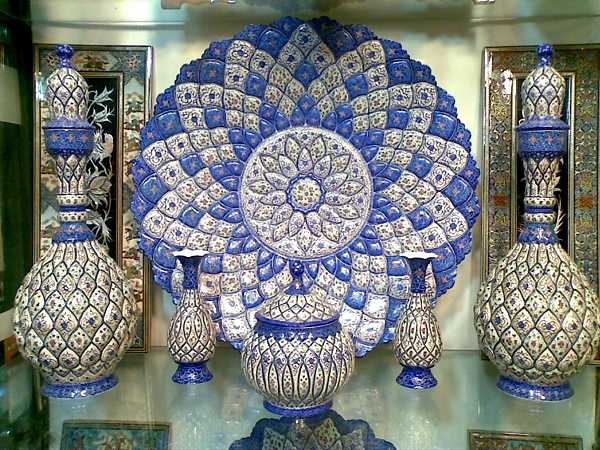
Doogh and Clove; An Odd Yet Fascinating Combination
If you want to experience a surprising taste, you must try the combination of doogh (a traditional Middle Eastern yogurt-based drink) and Gushfil. The tasteful Isfahanis have created this intriguing combination to, as always, captivate the attention of tourists. After gaz (a kind of nougat) and poolaki (a type of candy), doogh and Gushfil (cloves ) can be considered the best souvenirs of Isfahan. Even on your first try, the taste of doogh and Gushfil might leave you pleasantly surprised.
Isfahan Handicrafts: A Brief Overview
Isfahan is renowned not only for its delicious local treats but also for its rich handicrafts, reflecting the artistry of its people. The primary handicrafts found in the traditional markets of Isfahan include:
- 1. Enamelware (Minakari):ئIsfahan is the birthplace of Minakari art. Metal vessels adorned with this art can be purchased in the markets around Naghsh-e Jahan Square. The prices vary based on the metal used, with gold-enamelware being more expensive than silver.
- 2. Hand-Tooled Metal and Objects (Khatam-Kari): Although Shiraz has historical ties to Khatam-Kari, this art flourished in Isfahan during the Safavid era, making Isfahan home to some of the finest Khatam-Kari artists.
- 3. Pen Engraved Items (Ghalam-Zani): Pen engraving is a prevalent art among the original people of Isfahan. The best-engraved plates and items can be observed and purchased in the traditional markets of the city.
- 4. Copper Utensils (Mosi): Isfahan’s copperware market, called “Masghare,” is a popular destination for tourists seeking beautiful and functional souvenirs. Copper utensils are ideal for cooking and are favored by professional chefs.
- 5. Pen-Drawn Fabrics (Qalamkari): Isfahanis have a long history of using the art of Qalamkari to create patterned fabrics. Today, Isfahan’s Qalamkari tablecloths are considered some of the most attractive textiles globally.
- 6. Carpets (Persian Rugs): Carpet weaving is another traditional art practiced by the people of Isfahan. Isfahan’s carpets boast unique designs that captivate any observer.
- 7. Calligraphy Artworks (Khat-e Khatati): Adding calligraphy to the list, Isfahan has been the home of great calligraphers like Miremad Hosseini and Abdolmajid Taleghani.
Isfahan’s handicrafts encompass a wide range of arts, reflecting the city’s rich cultural heritage and the artistic prowess of its people.
Share Your Thoughts and Experiences on Buying Souvenirs in Isfahan . Feel free to share your opinions and experiences about buying souvenirs in Isfahan with us and other Gulf City Pedia users.
To purchase these Isfahan souvenirs, you should visit the Qeisarieh Bazaar in Naghsh-e Jahan Square, the shops around Naghsh-e Jahan Square, and the Isfahan Art Bazaar on Chaharbagh Abbasi Street. If you want to buy other souvenirs from Isfahan, you can also go to the commercial complex in Chaharbagh or City Center on Shahid Dastjerdi Highway, facing the south entrance of Sepahan City.
Frequently Asked Questions:
1. What are the souvenirs of Isfahan?
– Gazz, Poolaki, Borshotoak, Korki sweets, Rice sweets, Honey, Joz-e Qandi, Qalamzani, Minakari, Khatem Kari, Parchment textiles, Tile work, Embroidery, Melaile work, Pen engraving, and more.
2. What are the most expensive edible souvenirs in Isfahan?
– Gazz and Joz-e Qandi.
3. What is the famous honey of Isfahan called?
– Fereydunshahr Honey.
4. Which handicrafts are found in Isfahan?
– Minakari, Kashi (Tile work), Melaile, Qalabdozi (Embroidery), Khatem Kari, and Pen engraving.


